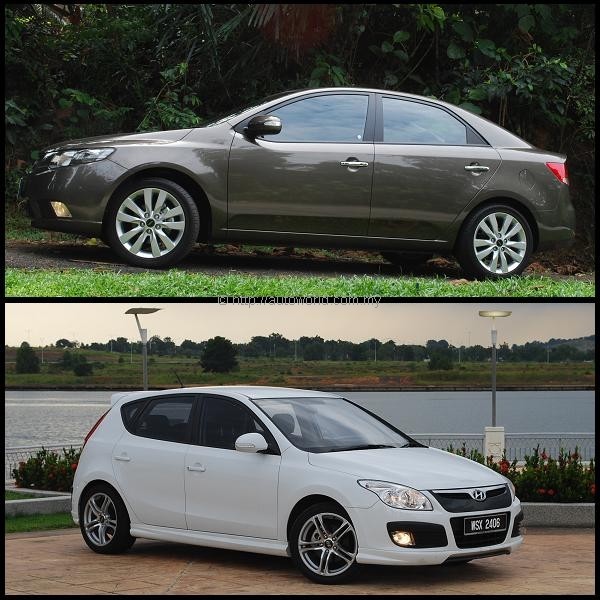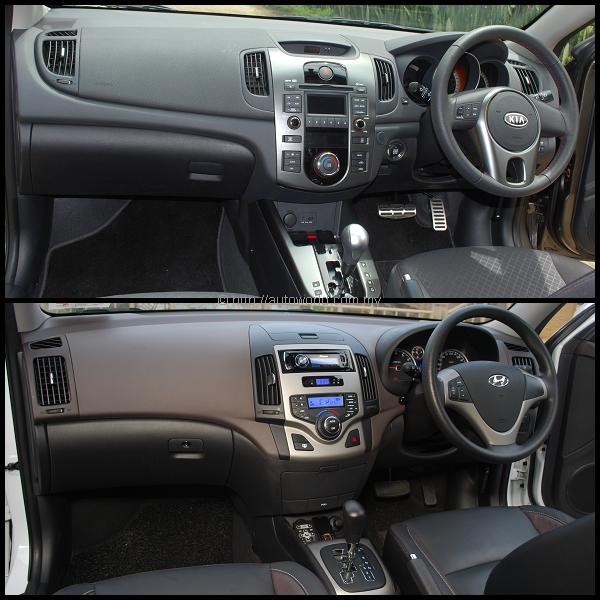Forte vs Hyundai i30
You don’t really need to be very old to remember the times when Korean cars were the butt of most automotive jokes. Truth be told, it felt like yesterday. I’m sure we’ve all had some friend or relative who plonked their cash for a Hyundai or Kia, only to be asked why didn’t they buy a Honda or Toyota instead.
I am equally sure that we’ve all heard our fair share of Korean car horror stories which all boil down to the following elements – high consumption, costly spares, and poor resale – any one of which, on its own, is enough to kill any car. Since all three factors were working in tandem, the early Korean products never stood a chance.
Things are fast changing. The Koreans never allowed the criticism to get at them, instead concentrating hard on improving their cars generation after generation. Their improvement is here for us to see in the likes of the Forte and the Hyundai i30.
It was purely coincidental, but a last minute schedule alteration allowed me to test the i30 2.0 and the Forte 1.6SX back-to-back, and what a fortunate thing it was. Both these cars were hugely impressive, even by Japanese standards. Oh yes, the Japanese need to keep a very close eye on their next door neighbours from now on.
The Forte and i30 represent huge leaps in design, quality and performance that signify the astonishing progress of the Korean auto industry. Comparisons against Japanese rivals begin to favour them even on paper, and they’re certainly conceding little on the road as well.
Both these cars are competitively priced and comprehensively equipped, especially the Forte. I remember my eye balls almost popping out the first time I saw the Forte’s equipment list. Push-start button, auto dimming mirror, auto headlights, traction control, and lots more, for eighty thousand ringgit.
The i30 is a fine preposition too, but it can’t match the Forte’s sheer value for money offering. At RM113k OTR with insurance, the i30 2.0 is good value, but with the Forte 2.0SX giving a lot more equipment and asking for RM9k less, the Hyundai suddenly looks like daylight robbery.
Don’t diss the i30 yet though, though it packs less toys than the Forte, the Hyundai is the better drive, even ignoring the horsepower advantage that the i30 2.0 has against the Forte 1.6. The i30, with its grippier tyres and all-round independent suspension, possesses a far superior balance between comfort and handling compared to the Forte.
On its own, the Forte is already a very competent handling car, with dynamics good enough to satisfy most owners. For a start, the i30 feels more comfortable going over ruts, potholes and bumps, but when pushed hard around corners, it is the Forte that nudges into understeer first, whereas the i30 just seems to have an endless reserve of grip to draw upon. Of course, the gap between the two car’s handling abilities can only be properly assessed if both are shod with the same tyres, which they are not.
Both the Forte and the i30 were hugely enjoyable cars to drive, though the i30 was more fun for me. This is of course, a matter of taste, which can be argued until the cows come home. However, at the end of the day, choices like these are usually settled by the ringgit and sen, and the fact is that the Forte gives you a lot more car, for a lot less ringgit.





























